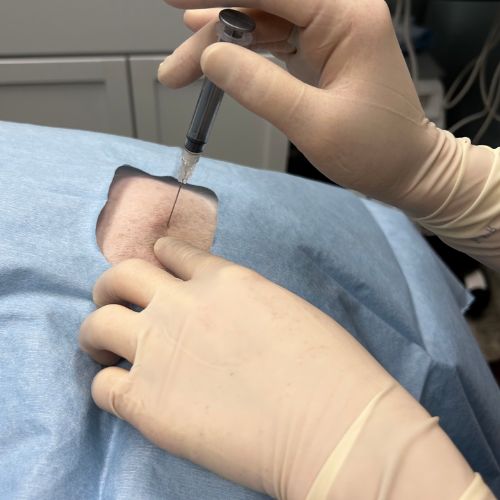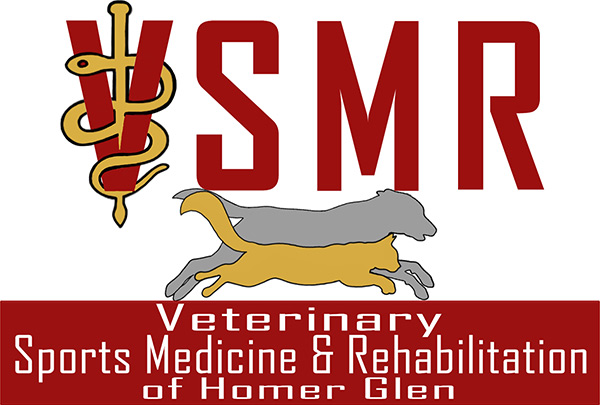VSMR
veterinary sports medicine & rehabilitation
our services
VSMR Services
We offer state-of-the-art veterinary care in the field of sports medicine and rehabilitation. The team at VSMR develops a customized treatment plan based on your pet’s diagnosis, abilities, and limitations. Rehabilitative therapies decrease pain, improve healing, enhance performance, prevent compensatory injuries, and restore functional ability, thus allowing our pets to maintain an excellent quality of life.
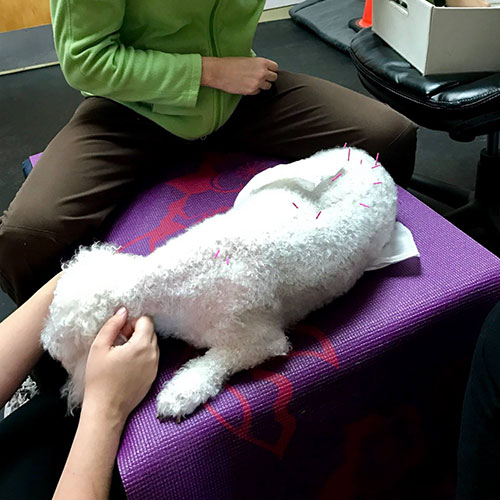
Acupuncture
Acupuncture is the insertion of fine needles into specific points on the patient to produce a physiologic response. Stimulation of acupuncture points affects the nervous system. It can lead to increased circulation, a decrease in muscle spasms, and the release of chemicals known as neurotransmitters and hormones. These chemicals can decrease pain sensation and help regulate the immune system, among other effects. Acupuncture is used in the treatment of disorders of the musculoskeletal and neurologic. Acupuncture can also be used in patients following surgical procedures, thereby improving the patient’s comfort level and speeding up the post-operative recovery period.
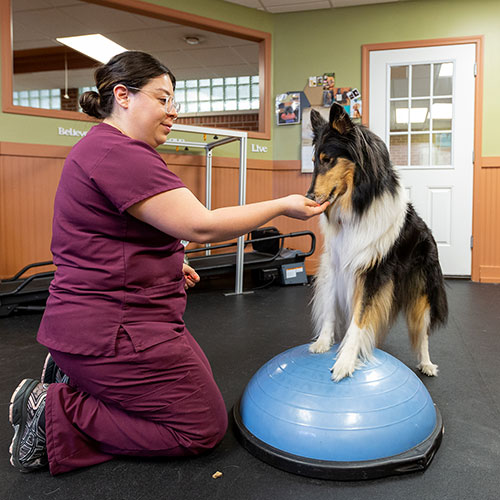
Therapeutic Exercises
Therapeutic exercise, a cornerstone of rehabilitation, is used to treat disorders of the musculoskeletal and/or neurologic systems as well as in patients who need conditioning and/or weight loss. Each session includes various types of exercise using appropriate equipment tailored to the patient’s specific diagnosis and needs. This modality can improve strength, flexibility, balance, and coordination, leading to improved mobility and better quality of life for your pet. This therapy may also be taught to an owner during a demonstration session in order for the owner to provide the benefits of therapeutic exercise outside of the clinic.
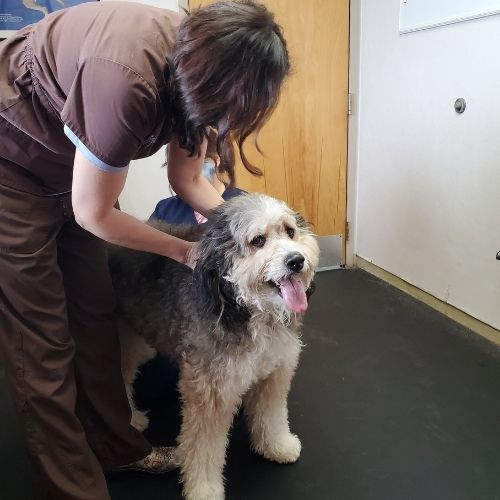
VSMT
Chiropractic care (also known as veterinary spinal manipulation therapy or VSMT) treats symptoms related to dysfunction of the musculoskeletal and neurologic systems. Abnormal gaiting and a decrease in mobility can be caused by heavy play, falls, trauma, discomfort, recent surgery, sports injuries, neurologic disease, conformational or postural abnormalities, and amputation. Pets of any age can benefit from chiropractic care.
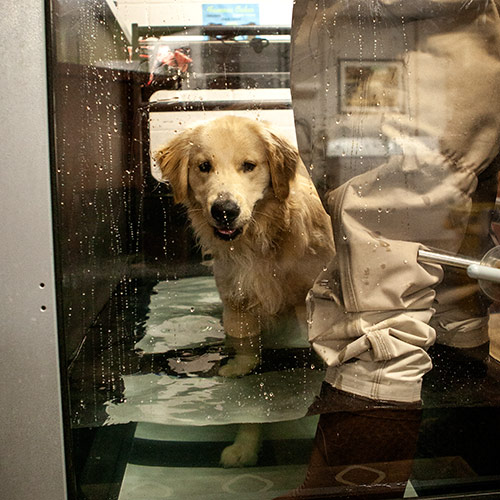
Hydrotherapy
Hydrotherapy utilizes the water’s warmth, buoyancy, and resistance in a controlled environment to provide an optimal setting for cardiovascular conditioning and physical rehabilitation. VSMR offers hydrotherapy in an underwater treadmill to treat many conditions such as arthritis, post-operative recovery, obesity, and spinal injury. Walking or swimming in water is also a great form of conditioning for healthy pets looking to excel in the sport of their choice.
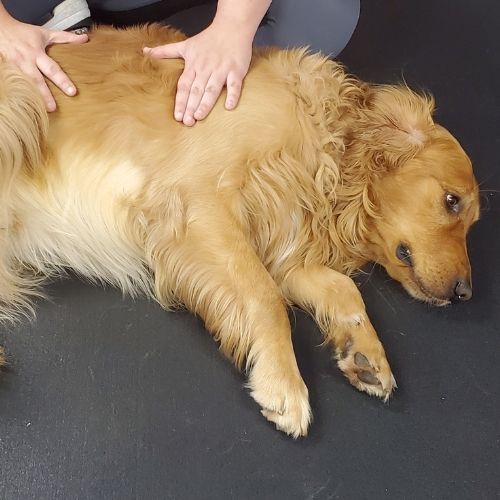
Manual Therapy
Manual therapy is a series of manual manipulation techniques used to improve a patient’s physical and emotional well-being. Physiological benefits of massage include pain relief, improved joint mobility, relaxation, and increased circulation. We customize each session based on your pet’s needs and often teach our clients how to perform certain techniques at home.
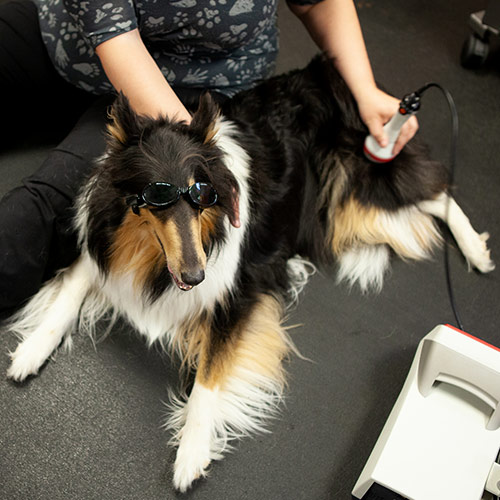
Therapeutic Laser
Therapeutic laser therapy is the use of light energy to stimulate tissue repair, provide pain management, and can be used to treat a myriad of conditions. The laser uses focused light of various wavelengths to stimulate tissue at and below the surface of the patient’s skin. This treatment affects tissues at the cellular level, which leads to improved circulation, decreased inflammation, and release of the body’s natural pain relievers, such as endorphins. It is used for post-operative pain management after orthopedic surgeries, musculoskeletal injuries, soft tissue injuries, and arthritis.
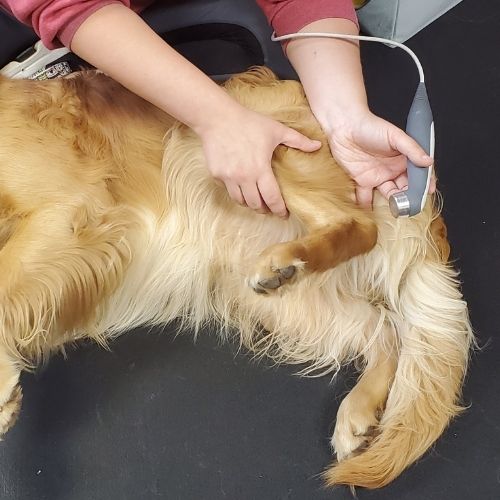
Therapeutic Ultrasound
Ultrasound uses sound waves to create heating (thermal effects) and vibration (non-thermal effects) to affect tissue healing. Ultrasound is beneficial for various conditions, including wounds, tendon and ligament damage, muscle relaxation, restricted range of motion and scar tissue, inflammation, localized swelling, and pain.
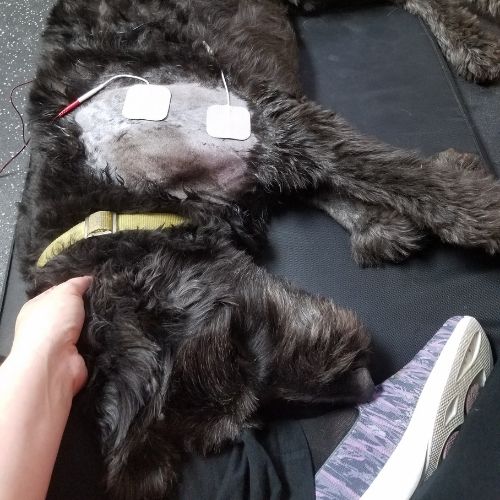
Electrical Stimulation
Electrical stimulation (E-Stim) is the use of electrical impulses to an area of the body to stimulate nerves and muscles. There are two types of E-Stim: 1) Neuromuscular E-Stim (NMES), which stimulates nerves and muscles to prevent muscle atrophy (muscle mass loss) and strengthen specific muscles. 2) Transcutaneous E-Stim (TENS), which stimulates nerves to facilitate pain relief and comfort. E-stim is beneficial for a variety of conditions, including acute and chronic orthopedic and neuromuscular injuries, recovery from surgery, paralysis, and pain. This therapy may also be taught to an owner during a demonstration session in order for the owner to provide the benefits of E-stim outside of the clinic.
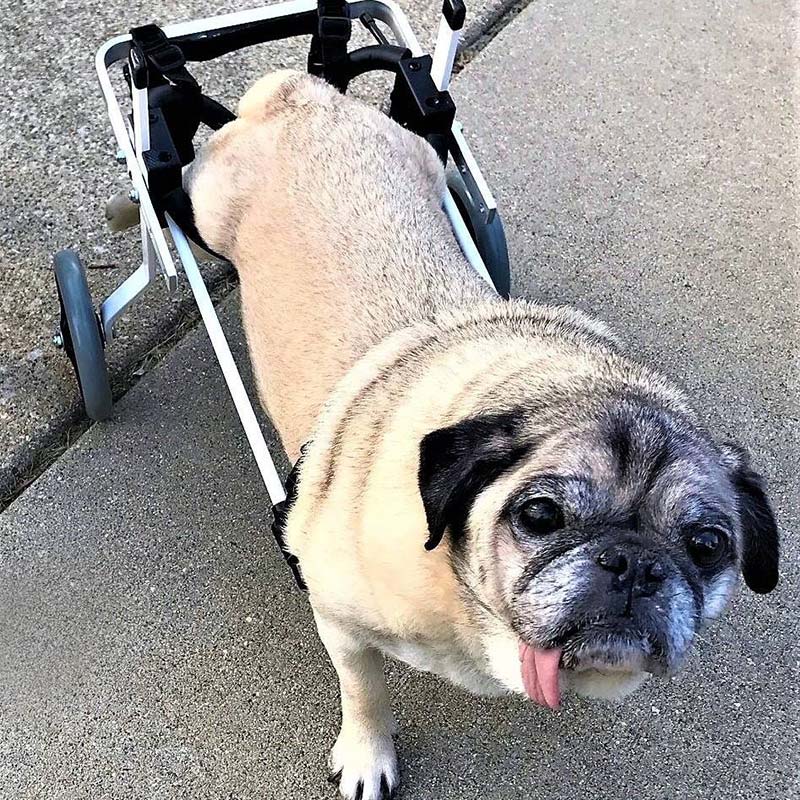
Custom Orthotic, Prosthetic, and Carts
There are many conditions that benefit from the use of an assistive device or cart. VSMR’s team will select the appropriate braces, prosthetics, and other devices. We can also assist in the measurement, fitting, acclimation to, and proper use of a cart. A VSMR veterinarian must thoroughly evaluate any patient that needs the assistance of a device or cart to determine what is most appropriate for the pet.
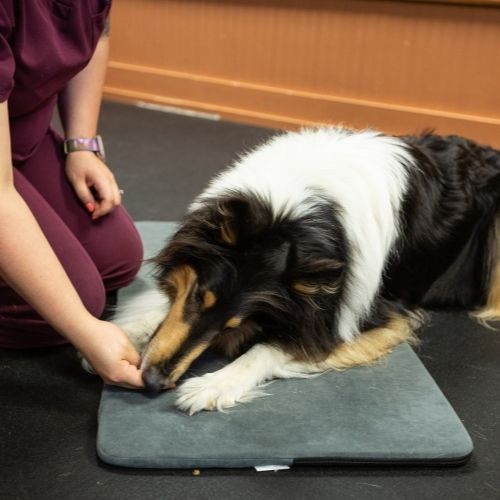
Pulse-Electromagnetic Field Therapy
VSMR uses and recommends The Assisi Loop. This device offers targeted Pulsed Electromagnetic Field Therapy (targeted PEMF) in a portable, easy-to-use device that can be used in clinic or in the home. The Loop has been proven to reduce pain and inflammation and has been cleared by the FDA, and is considered a non-pharmaceutical anti-inflammatory device (NPAID).
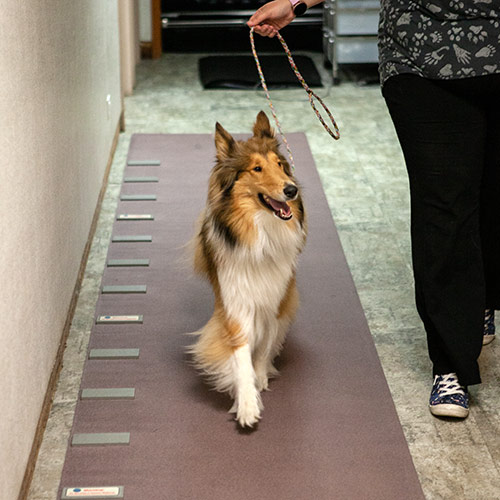
GAIT4Dog® Objective Gait Analysis System
GAIT4Dog®, the gait analysis system utilized by VSMR, can assess the orthopedic soundness of your canine via a pressure-sensitive walkway measurement system designed to capture and objectively analyze data in minutes. Dogs can be tough; they don’t always show signs of pain or limping when they’re injured. This technology allows us to assess not only orthopedic soundness (total pressure index), which provides a baseline, but a whole host of other information: step and stride length, velocity, stance time, swing time, and more.
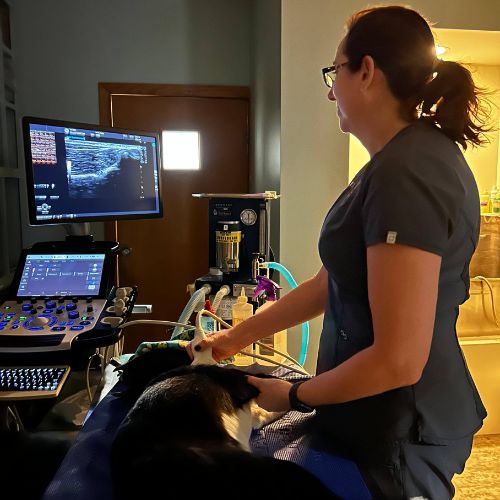
Musculoskeletal Ultrasound
Diagnostic ultrasound of the musculoskeletal system can offer a quick, noninvasive way to diagnose soft tissue injuries. In addition, this technology can offer an accessible way to monitor injuries during treatment and assess the efficacy of the rehabilitation process. Diagnostic ultrasound can also confirm that injuries are healed and determine the appropriate time to return to sport. Advantages of using ultrasound include the ability to visualize soft tissues and certain structures in dynamic form during movement, which can help us have a more complete evaluation and a better-informed recommendation for rehabilitation. The most common areas for musculoskeletal ultrasound evaluation are the shoulder, carpus, Iliopsoas muscle, and Achilles tendon.
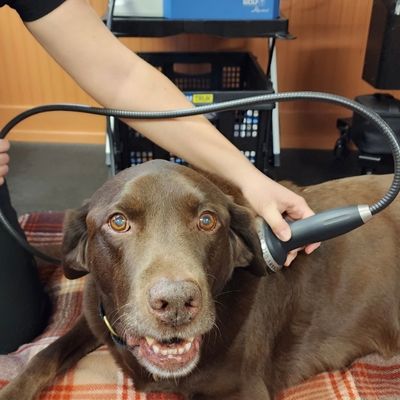
PiezoWave² Shockwave Therapy
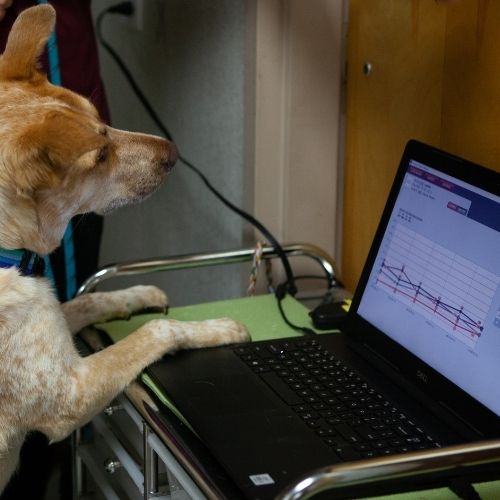
Companion Stance Analyzer
The stance analyzer provides a standing weight-bearing assessment. With the patient standing with one paw in each of the four quadrants, we can determine an average of the percentage of weight being put on each leg. This can help us determine if a patient has a lameness that might not be obvious and can give us a quantitative measurement to determine weight-bearing progress after surgery.
